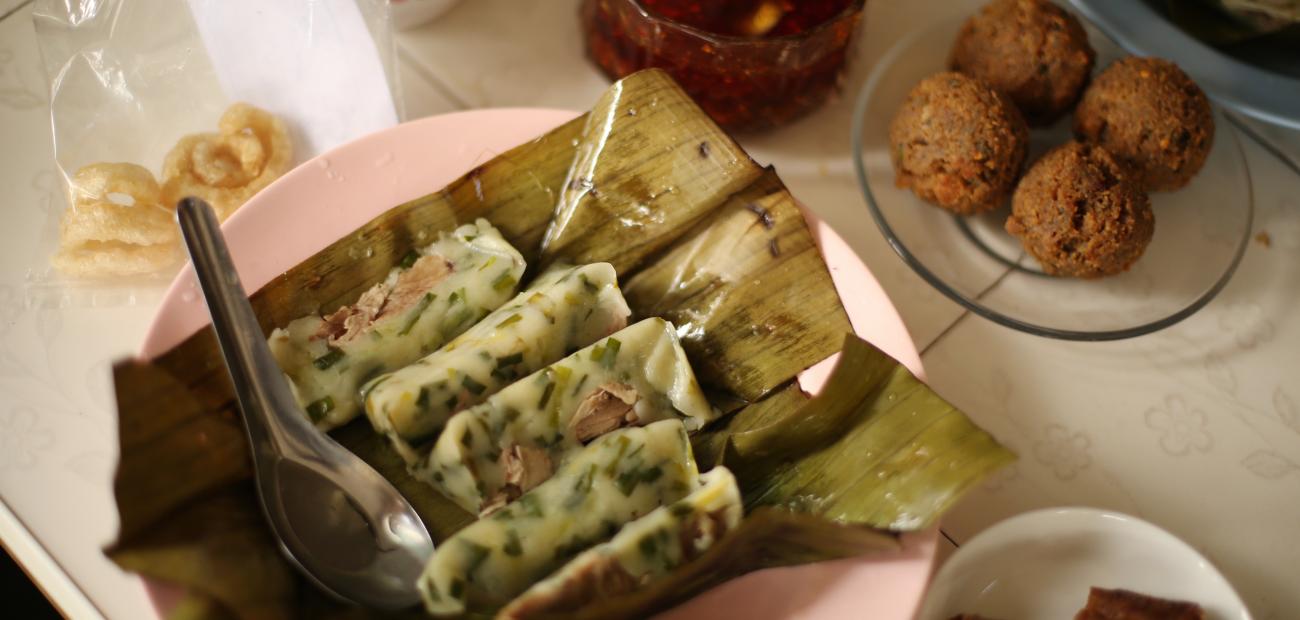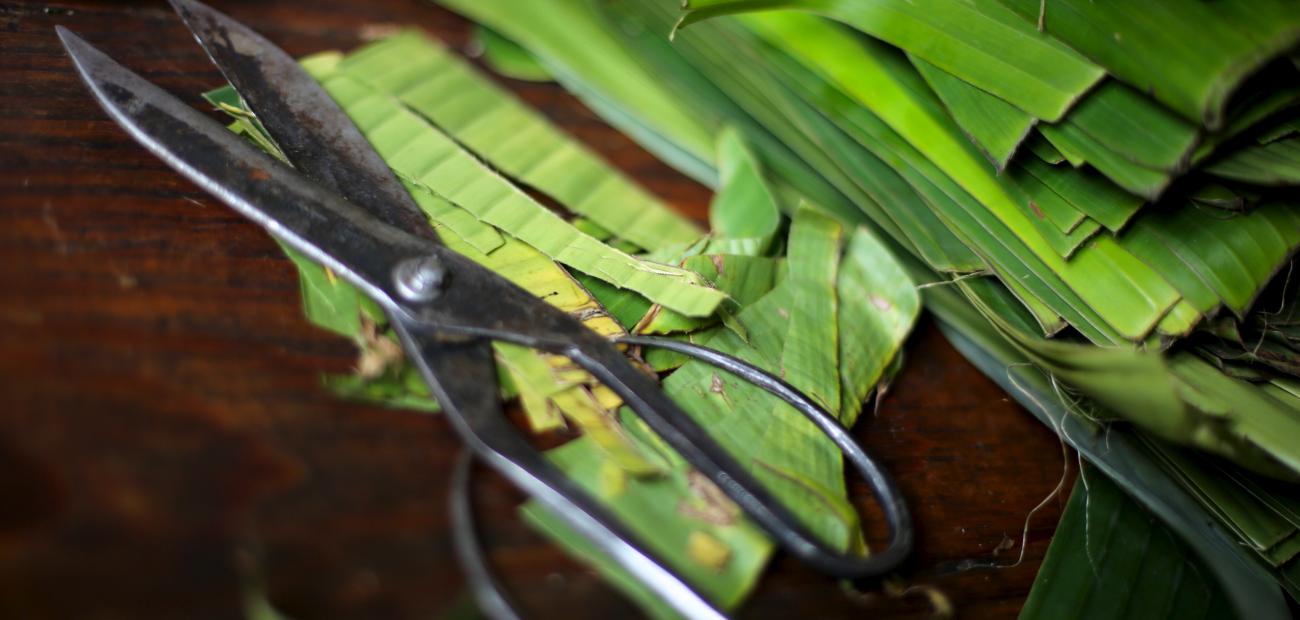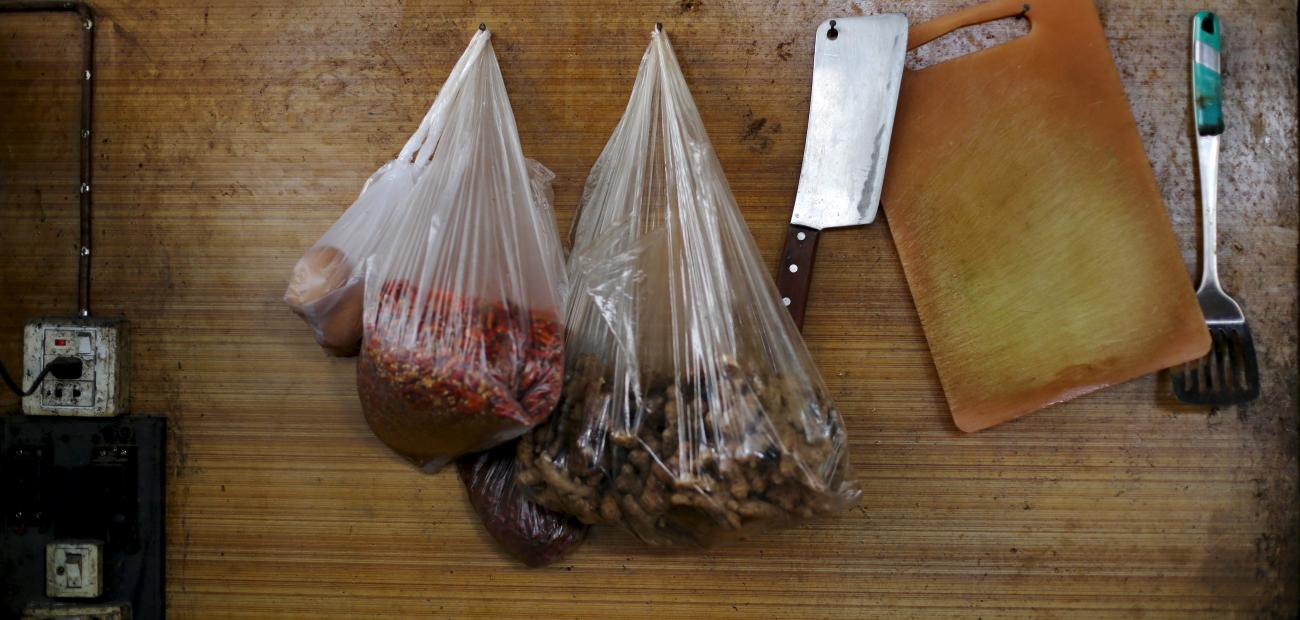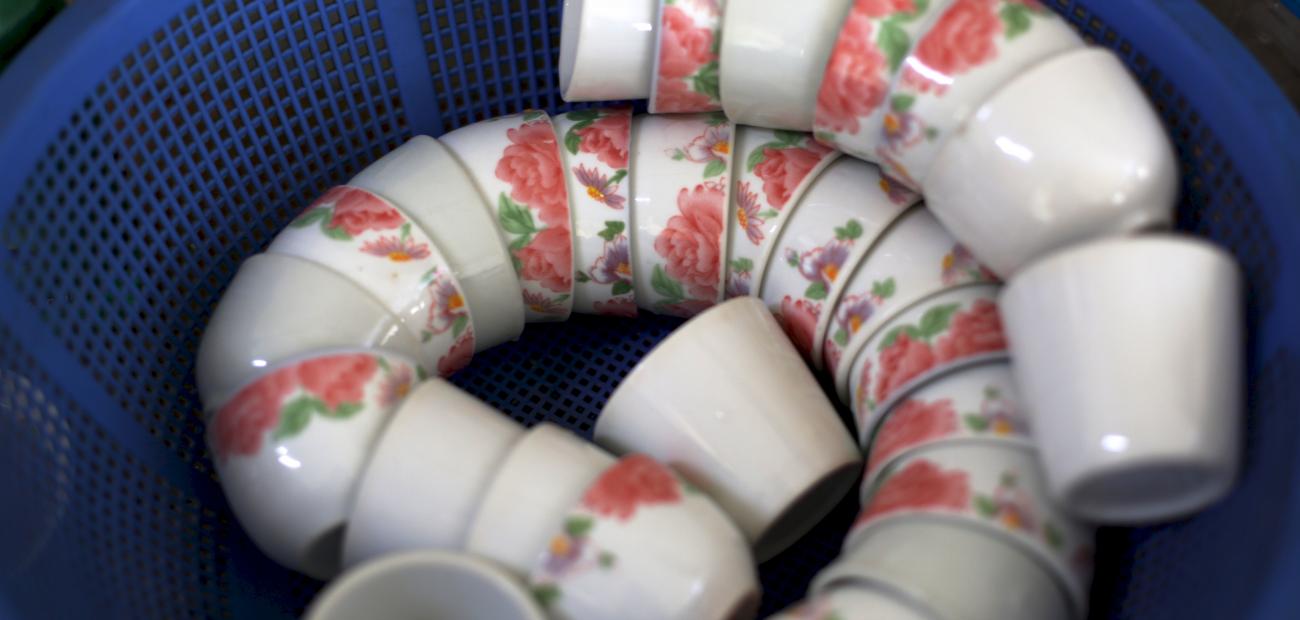In Kayah state, we munched on crunchy fried frogs, slurped snails in soup and had the most incredible chilli dip (which owed its extraordinary sharp tang to a mystery ingredient we later discovered to be gall bladder bile) all washed down with a hearty swig of rice wine. But the dish we just couldn't get enough of was hin htote -- delicious spring onion steamed dumplings served wrapped in banana leaves -- so we asked our favourite local restaurant if we could film them making it.
U Tun Ya Mingalar Hin Htote might look like an unprepossessing eatery, with bare concrete walls and a shopfront open to the road, but it is a local institution that has been serving up rice flour dumplings for 15 years. Crowds form at the counter in the early mornings and afternoons, as people wait on large takeaway orders before bustling out bearing bulging plastic bags full of the hot delicacies.
At the back of the room, unfazed by the chatter of customers and the clatter of cutlery, a group of women form a deft production line. Their practiced hands move at lightening speed, as they spoon freshly-made dough into a bright green square of bamboo leaf before wrapping it into a neat parcel.
Ngwe Khin, 57, oversees the production.
“(Hin Htote) is a traditional, everyday dish. There’s only one type of hin htote, with rice flour and spring onion. It’s eaten as a breakfast, around 10:30, 11 o’clock, and then people usually eat it again after two in the afternoon. It’s a snack for people to stave off hunger,” she said.
“When I was young, we would make hin htote at home. These days, people just come to the shop to eat it. I guess it’s because people are busier and they don’t have time. It is a time-consuming process.
“First, you soak the rice in water. Then you grind it and roast it. Then you mix everything together. It’s a lot of work," she said, adding a strip of pork to her dough, rolling it swiftly in a leaf and pinning the packet together with a toothpick.
Trays of the vivid, freshly-wrapped bundles are then steamed in a big oven out the back before being served up to diners.
“It takes about half an hour to steam. Each tray takes about a hundred pieces and the machine can take five trays each time.
“We offer three things here -- hin tote, Kayah sausage and pork meat balls. We usually sell out. I’m very happy when I see customers enjoy our food. I guess people like it because it’s delicious.”
(Interviewed May 2016)












